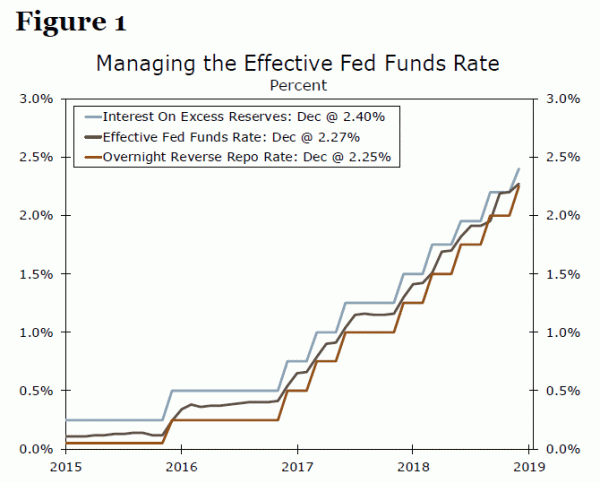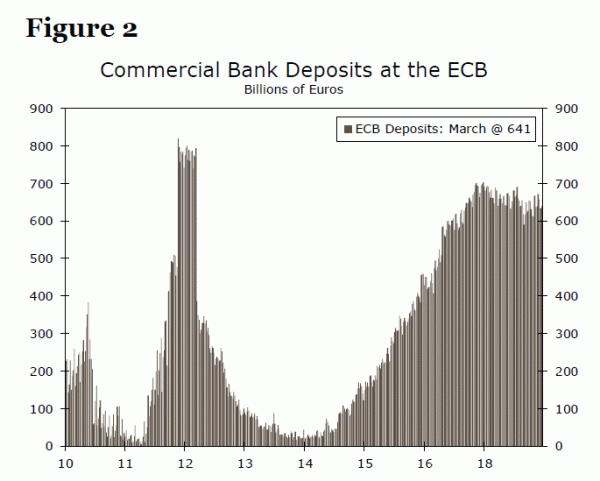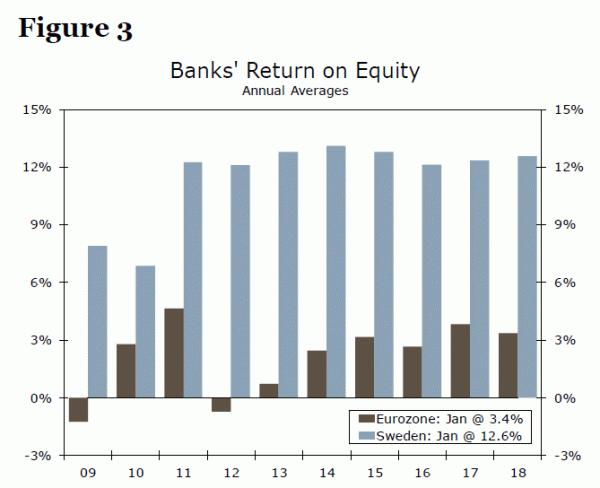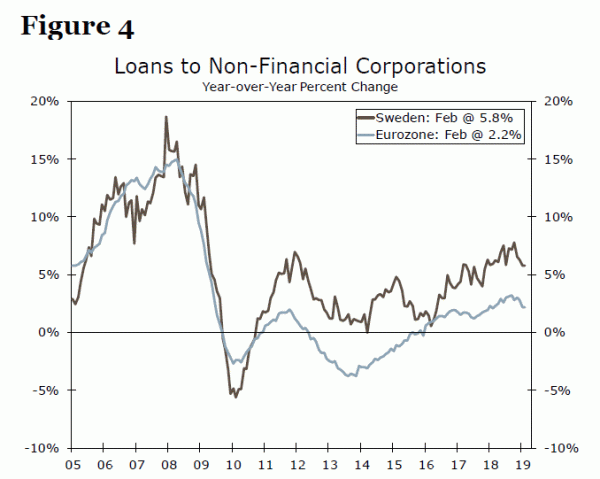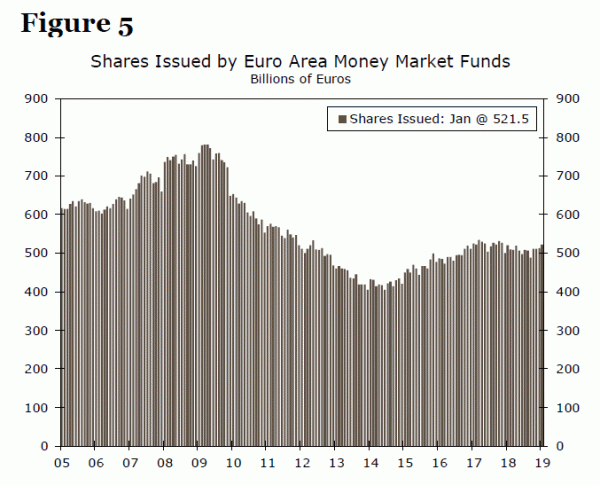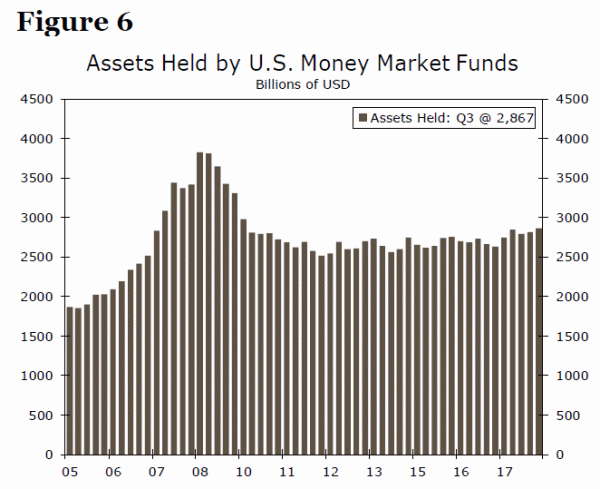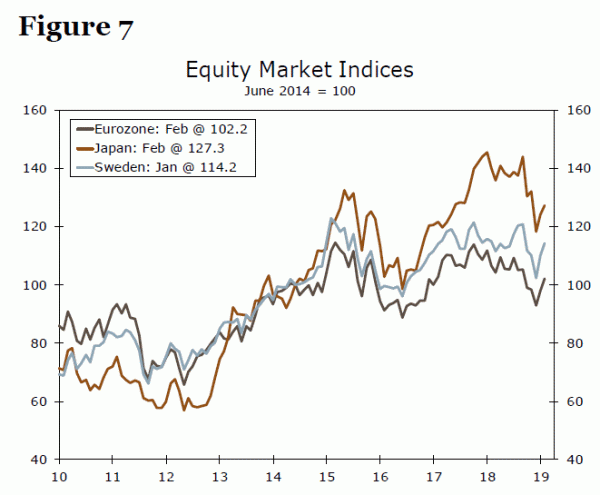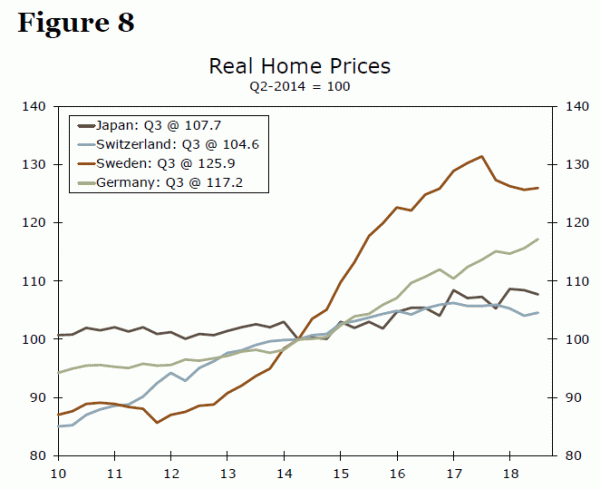Executive Summary
In the second of a series of reports examining how the Fed’s framework and toolkit may evolve in the coming years, we discuss the potential for the Federal Open Market Committee (FOMC) to employ negative interest rate policy (NIRP) in a future downturn. The experience of other central banks with NIRP in recent years shows that there do not seem to be inordinate costs associated with negative rates. But NIRP does not appear to be a panacea either. We conclude that the Fed could potentially add NIRP to its toolkit if the next downturn is severe enough, but that it may need to employ other policies as well to stimulate the economy.
Never Say “Never”
As we discussed in the first report in this series, the Federal Reserve is currently undertaking a review of its monetary policy strategy and its policy tools so that it is prepared to combat future downturns.1 We concluded in our first report that the Fed may adopt a strategy to help it raise inflationary expectations, thereby reducing the time that its policy rates remain near 0%, which at one time was widely believed to be their effective lower bound (ELB). But other central banks have discovered in recent years that 0% is not necessarily the ELB. That is, central banks in the Eurozone (i.e., the ECB), Denmark, Japan, Sweden and Switzerland have all adopted NIRP in recent years. By taking policy rates below 0%, these central banks have been able to guide market-determined short-term interest rates into negative territory as well.
In 2016, when the CPI inflation rate in the United States was hovering at only 1%, then-Fed Chair Janet Yellen said that she would not rule out using NIRP in the future. But she also acknowledged that the Fed would need to closely study the pros and cons of negative interest rates before it would employ the tool. In the event, the FOMC never cut its policy rates below 0%. But could the Fed follow the lead of other major central banks by slashing its own policy rates into negative territory at some point in the future? Is it even possible for the Fed to do so?
The Mechanics of Going Negative
In a previous report we noted that the Federal Reserve has been using two administered rates to keep the fed funds rate within a 25 bps range (Figure 1).2 The top of the range has effectively been set by the interest rate that banks receive for the excess reserves they hold at the Fed, the so-called interest on overnight excess reserves (IOER).3 Government-sponsored enterprises (e.g., Fannie Mae and Freddie Mac) also hold deposits at the Fed, but these GSEs are not entitled to receive interest on these deposits. If these GSEs were to flood the fed funds market with deposits, the fed funds rate could move below the FOMC’s target range. Therefore, the Fed has introduced a reverse repurchase rate (RRP) facility by which GSEs can “lend” deposits to the Fed, thereby minimizing their supply in the fed funds market.4 The rate that the Fed pays on the RRP facility sets the lower bound of the target range for the fed funds rate.
In order for the Fed to bring about negative market rates, it would need to move its target range for the fed funds rate below 0%. Would American banks be willing to accept negative rates on the excess reserves that they hold at the Fed? As shown in Figure 2, the deposits that banks in the euro area hold at the ECB have mushroomed since 2014 despite the ECB’s deposit rate being negative, suggesting that American banks could also be willing to accept a negative interest rate. Although U.S. banks would be paying interest to the Fed, it would essentially be for an overnight risk-free loan they are making to the Fed. The alternative would be to make loans to households and businesses that have some degree of inherent risk. Moreover, banks have an incentive to hold excess reserves at the Fed as those holdings help banks meet their regulatory liquidity coverage ratio.5
What about at the lower bound? Would GSEs and the other financial institutions that have access to the RRP facility be willing to accept negative rates on RRPs? Probably, because the alternative for them would be to lend their cash at rates that could be even more negative. In sum, it seems that the Fed could technically take its targeted range for the fed funds rate into negative territory. But are there other considerations that could make it leery of going negative?
Do Negative Rates Squeeze Banks?
An oft-discussed problem with negative interest rates is their potential adverse effect on the banking system. One possible source of concern is a fear that consumers would pull their deposits from commercial banks with the implementation of negative rates. However, commercial banks in economies with negative interest rates have been reluctant to charge their customers interest on their deposits, and deposits have continued to rise in those economies since they implemented NIRP. The takeaway for the Federal Reserve is that American banks probably would not experience deposit flight if the FOMC cut its policy rates below 0%.
Another issue often discussed in the context of negative rates and the banking sector is bank profitability. A negative central bank deposit rate effectively charges commercial banks to hold reserves at the central bank, and in theory should suppress banks’ interest income from lending activity. Critics often point to Europe’s banking sector woes as evidence that negative interest rates are a detriment to the profitability of banks. However, return on equity for euro area banks has generally risen since the ECB implemented negative rates, while the same measure for Swedish banks has been essentially flat since that country’s central bank first cut rates into negative territory (Figure 3). Research conducted at the International Monetary Fund suggests that, faced with negative interest rates, banks have typically been able to offset lower interest income with lower funding costs, helping to stabilize profitability.6
Meanwhile, if there is in fact an adverse effect from NIRP on bank profitability, it does not seem to be hampering bank lending. As shown in Figure 4, growth in bank lending to non-financial corporates in the Eurozone and Sweden slowed markedly in 2012-2013, likely reflecting stresses from the European sovereign debt crisis. However, loan growth has generally been positive in the negative-rates era in these economies. The Swiss National Bank went negative in January 2015, yet bank lending in Switzerland has risen roughly 10% over the past four years. To be sure, economies that have implemented NIRP have not necessarily seen stunning rates of growth in bank lending, and lending growth generally remains subdued relative to pre-crisis highs. However, this a phenomenon seen across a wider range of countries that have not implemented NIRP, including the United States. In our view, the takeaway for Fed policymakers is that negative interest rates do not seem to have a clear detrimental effect on bank profitability or lending activity.
Would Money Market Mutual Funds Implode?
Adverse effects on money market mutual funds (MMMFs) from negative interest rates are another area of potential concern. Mutual fund companies generally buy the short-term obligations of governments and financial institutions, and then sell shares to the public. As such, MMMFs provide an important financing vehicle for these sectors. If negative rates diminished the attractiveness of MMMFs to the extent that investors were less willing to buy shares, the financing of governments and financial institutions could be adversely affected.
At their peak in early 2009, the value of MMMFs in the Eurozone totaled nearly €800 billion (Figure 5). This outstanding amount fell by roughly 50% by early 2014. But this marked drop largely occurred as the ECB was cutting its deposit rate to 0.00% in July 2012 from 3.25% in November 2008. The value of MMMFs has risen by approximately €100 billion since the ECB first implemented NIRP in June 2014. Although the value remains well short of the previous peak, it is hard to make a convincing argument that negative rates have had a detrimental effect on MMMFs in the Eurozone.
A similar pattern has occurred with MMMFs in the United States. That is, the value of MMMFs peaked in late 2008, and then subsequently trended lower until 2012 (Figure 6). Although the Fed has raised rates 225 bps since December 2014, the value of MMMFs in the United States is not materially higher today than it was when the Fed first began to tighten policy. In short, the level of interest rates does not seem to have a key effect on the value of American MMMFs. If the experience of the Eurozone is a useful guide, then the Federal Reserve probably does not need to be unduly concerned that negative rates could lead to significant outflows from MMMFs in the United States.
Bubble Trouble?
By depressing market-determined interest rates, NIRP can be stimulative for growth to the extent that it raises prices for real and financial assets in the economy. However, if rates are negative for too long, the policy could potentially lead to excessive risk taking and bubbles in financial markets. Let’s start with the equity market. Since the ECB adopted NIRP in June 2014, the stock market in the Eurozone is essentially flat on balance and the Swedish stock market is not much higher (Figure 7). The Japanese stock market is up about 25% since the Bank of Japan cut rates into negative territory in January 2016. But is a 25% gain over a 25-month period really a bubble?7
Real estate prices could also be pushed up excessively by negative interest rates. In Germany, real house prices are up more than 15% since the ECB adopted NIRP in June 2014 (Figure 8). That said, German house prices are more or less flat on a real basis since the turn of the century, so it’s difficult to make a convincing case that there is a bubble in the German housing market. The same can be said for real house prices in Switzerland and Japan. But real house prices in Sweden have risen by 15% since the Swedish Riksbank implemented NIRP in February 2015, and they have climbed by more than 60% since the depths of the global financial crisis when the Swedish central bank slashed its policy rates. Could NIRP, or more broadly, an extraordinary degree of monetary policy accommodation, have led to a bubble in the Swedish housing market?
Maybe, but that does not necessarily mean that the Riksbank should have refrained from cutting rates into negative territory. Economists have long known that it is difficult to successfully target multiple objectives with only one policy instrument. The Swedish Riksbank adopted NIRP in an effort to keep CPI inflation at its target rate of 2%, the primary mandate that the Swedish government has given the central bank. In order to achieve this target inflation rate and prevent a house price bubble, the central bank would need another policy instrument. Enter macro-prudential policy. Authorities could make it more difficult for a property bubble to inflate by, for example, directing banks to reduce loan-to-value (LTV) ratios, raising capital requirements on mortgage lending, etc. Designing and implementing macro-prudential policy brings its own challenges, but such policies would likely be an important complement to NIRP from a financial stability perspective.
Conclusion
So what is the verdict on negative rates? On the one hand, there do not seem to be inordinate costs associated with NIRP. Deposits have not drained out of banks in economies where negative interest rates are in place. Bank profitability has held up in those economies, and bank lending has not collapsed. The MMMF industry has also survived. NIRP may have contributed to a potential housing bubble in Sweden, but authorities could adopt macro-prudential policies to reduce the potential for bubbles to develop in the real estate market and in financial markets more broadly.
On the other hand, however, NIRP does not appear to be a panacea either. Bank lending in economies with negative rates is up, but lending growth rates have not been especially strong. Moreover, economic growth rates have generally been lackluster. Real GDP growth has averaged only 1.9% percent per annum since 2014 in both the Eurozone and Switzerland, and Japanese economic growth remains sluggish.
We conclude that the Federal Reserve could potentially add NIRP to its toolkit if the next downturn is severe enough. Obviously, the FOMC would need to cut rates all the way back to 0% before implementing NIRP. But the mixed results that other central banks have experienced with negative rates in the current cycle suggest that the Fed may need to employ other policies in conjunction with NIRP to jumpstart the economy. For example, the Fed turned to quantitative easing (QE) and forward guidance to provide monetary accommodation in the early years of this expansion. Could the FOMC use these tools again? We will address that question in our next report.
1 See “Two Thine Own Inflation Target Be True?” (March 4, 2019).
2 See “Getting Technical: Managing the Fed Funds Rate” (November 29, 2018).
3 The Fed has made two “technical adjustments” to IOER to help keep the fed funds rate in the middle of the FOMC’s target range. See footnote 2.
4 Other financial institutions, such as asset managers and broker/dealers, can also participate in the RRP facility. Although these institutions do not hold deposits at the Fed, allowing them access to the facility helps the Fed control other short-term interest rates.
5 See “Will the Fed’s Balance Sheet Ever Return to ‘Normal’?” (August 29, 2018).
6 Detragiache, Enrica, Thierry Tressela and Rima Turk-Ariss. “Where Have All the Profits Gone? European Bank Profitability Over the Financial Cycle.” IMF Working Paper Series WP/18/99.
7 To put the 25% rise in the Japanese stock market over the past 25 months into perspective, consider that the NASDAQ Composite index soared 200% in the 25 months preceding its March 2000 peak. The Japanese Nikkei index rose 90% between November 1987 and December 1989.




